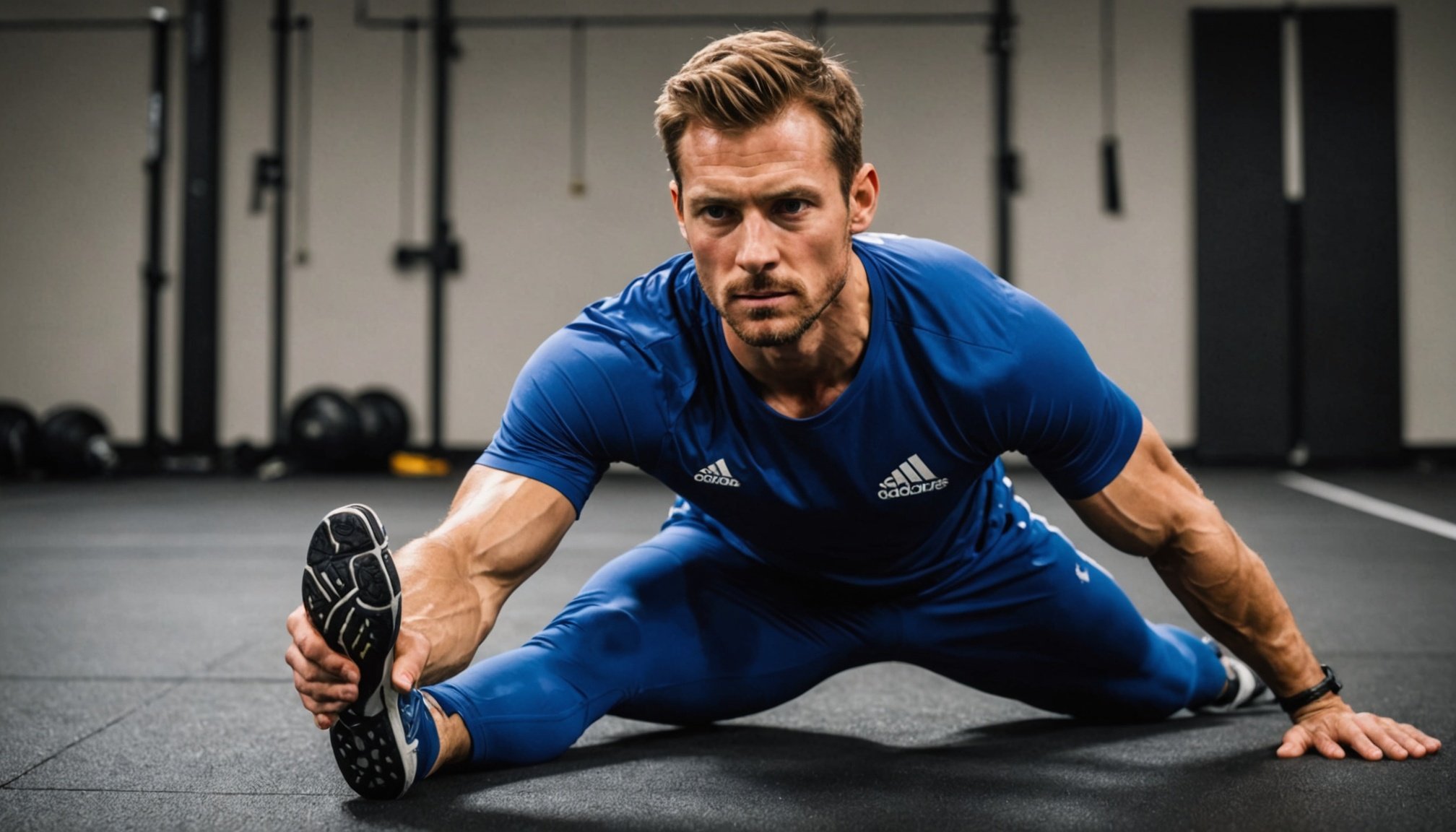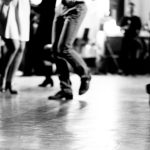Ultimate Stretching Strategies for UK Athletes: Boost Performance and Prevent Injuries
Understanding the Importance of Stretching for Athletes
When it comes to athletic performance, stretching is often overlooked but is a crucial component of any training regimen. For UK athletes, incorporating effective stretching strategies can significantly enhance performance, prevent injuries, and ensure long-term health and fitness.
What are the Benefits of Stretching?
Stretching offers a multitude of benefits for athletes, including improved flexibility, enhanced range of motion, and reduced risk of injury. Here are some key advantages:
Also read : Transforming UK Sports Training: How Virtual Reality is Shaping Elite Teams’ Success
- Improved Flexibility: Regular stretching helps to lengthen the muscles and tendons, making it easier to move and perform athletic actions. This is particularly important for athletes who require a wide range of motion, such as runners, dancers, and gymnasts[1][3].
- Enhanced Athletic Performance: Increased flexibility and range of motion can lead to better athletic performance. For example, a runner with more flexible adductor muscles can maintain a smoother stride and reduce the risk of groin pain[1].
- Injury Prevention: Stretching can help prevent injuries by reducing muscle tension and improving joint mobility. This is especially true for dynamic stretching, which mimics the movements of the sport or activity, preparing the muscles for the upcoming exertion[1][2].
Dynamic Stretching: The Warm-Up Essential
Dynamic stretching is a form of stretching that involves moving the joints through a range of motion while keeping the muscles active. This type of stretching is ideal for warm-ups before athletic activities.
Why Dynamic Stretching?
Dynamic stretching is preferred over static stretching for warm-ups because it:
Have you seen this : Effective techniques for uk athletes to overcome homesickness during training camps
- Mimics Athletic Movements: Dynamic stretches are designed to replicate the movements of the sport, helping to prepare the muscles and joints for the upcoming activity. For instance, leg swings and lunges with a twist are excellent dynamic stretches for runners[1].
- Improves Muscle Activation: Dynamic stretching activates the muscles, increasing blood flow and temperature, which can enhance athletic performance. It also helps in neuromuscular facilitation, preparing the nervous system for the demands of the sport[2].
- Reduces Injury Risk: By warming up the muscles and improving flexibility, dynamic stretching can reduce the risk of muscle strains and other injuries.
Here are some examples of dynamic stretches that athletes can incorporate into their warm-up routines:
- Leg Swings: Stand with your feet hip-width apart and swing one leg forward and backward, then switch to the other leg.
- Lunges with a Twist: Perform a lunge and twist your torso to one side, then switch legs and twist to the other side.
- Lateral Leg Raises: Stand with your feet together and raise one leg out to the side, keeping it straight, then lower it back down and repeat with the other leg[1].
Static Stretching: The Cool-Down Essential
Static stretching involves holding a stretch for a period of time to lengthen the muscles and tendons. This type of stretching is best done after athletic activities as part of the cool-down routine.
Why Static Stretching?
Static stretching is beneficial for several reasons:
- Reduces Muscle Soreness: After a workout, static stretching can help reduce muscle soreness and improve recovery. It allows the muscles to relax and lengthen, reducing tension and promoting healing[1].
- Improves Flexibility: Regular static stretching can lead to long-term improvements in flexibility. This is particularly useful for athletes who need to maintain or improve their range of motion over time[3].
- Enhances Recovery: Static stretching can help in the recovery process by increasing blood flow to the muscles and promoting the removal of waste products that can cause soreness.
Here are some examples of static stretches that athletes can include in their cool-down routines:
- Hamstring Stretch: Sit on the floor with your legs straight out in front of you. Lean forward, reaching for your toes, and hold for 20-30 seconds.
- Quad Stretch: Stand with one hand against a wall for balance. Bend one knee, keeping your foot behind you, and hold for 20-30 seconds. Switch legs.
- Chest Stretch: Stand in a doorway with your hands on the doorframe at shoulder height. Lean forward until you feel a stretch in your chest and hold for 20-30 seconds[3].
Foam Rolling and Self-Myofascial Release
In addition to stretching, foam rolling and self-myofascial release are valuable tools for athletes to maintain muscle health and prevent injuries.
How Foam Rolling Works
Foam rolling involves using a foam roller to apply pressure to specific areas of the body, helping to release tension in the muscles and improve circulation.
- Reduces Muscle Tension: Foam rolling can help release tight muscle fibers, improving flexibility and range of motion. It is particularly useful for areas like the IT band, quadriceps, and adductors[1].
- Promotes Recovery: By increasing blood flow and reducing muscle tension, foam rolling can aid in the recovery process after a workout.
- Identifies Trigger Points: Foam rolling can help identify trigger points, which are hyperirritable knots in the muscles that can cause pain and stiffness.
Here’s a simple guide to foam rolling the adductors:
- Sit on the ground with a foam roller placed under your inner thigh.
- Gently roll back and forth, applying pressure to any tight spots.
- Hold for 10-15 seconds on any tender areas and repeat 3-5 times per leg[1].
Plyometrics: Enhancing Power and Performance
Plyometric exercises, also known as jump training, are designed to improve muscle power and explosiveness. These exercises are particularly beneficial for athletes who need to enhance their speed and agility.
What are Plyometrics?
Plyometrics involve fast, powerful movements that use the elastic recoil of muscles and the stretch reflex to produce a rapid, strong muscle response.
- Improves Explosive Power: Plyometric exercises, such as jump squats and bounding, help build the explosive power of the muscles, which is crucial for sprinters and athletes who need to accelerate quickly[2].
- Enhances Running Economy: Studies have shown that plyometric training can improve running economy by strengthening the muscles and tendons, allowing athletes to run more efficiently[2].
- Reduces Injury Risk: By strengthening the muscles and improving tendon elasticity, plyometric training can reduce the risk of injuries such as ACL tears and muscle strains.
Here are some examples of plyometric exercises that athletes can incorporate into their training:
- Jump Squats: Stand with your feet wider than hip-width apart. Squat down and then jump straight up, landing on the balls of your feet. Repeat.
- Bounding: Stand with your feet hip-width apart. Push off with one foot and jump forward as far as you can, landing on the other foot. Immediately push off with the other foot and repeat.
- Jump Lunges: Stand with one leg forward and the other leg backward. Lunge down and then spring up, switching legs in the air. Repeat[2].
Strength Conditioning and Neuromuscular Facilitation
Strength conditioning and neuromuscular facilitation are essential components of an athlete’s training program, complementing stretching and plyometric exercises.
Strength Training
Strength training helps build the strength and resilience of the muscles, which is critical for athletic performance and injury prevention.
- Builds Muscle Strength: Strength training can help athletes develop stronger muscles, which can improve performance and reduce the risk of injuries. For example, strengthening the glutes and hamstrings can help reduce the stress on the adductor muscles, preventing groin pain[1].
- Improves Athletic Performance: Stronger muscles can enhance athletic performance by allowing athletes to generate more power and speed. This is particularly important for sports that require explosive movements, such as football and basketball.
- Enhances Recovery: Strength training can also aid in recovery by improving muscle resilience and reducing muscle soreness.
Here are some strength training exercises that athletes can include in their routines:
| Exercise | Muscle Group | Description |
|---|---|---|
| Squats | Glutes, Quads, Hamstrings | Stand with feet hip-width apart. Lower your body down until your thighs are parallel to the ground. Push back up to the starting position. |
| Lunges | Glutes, Quads, Hamstrings | Stand with feet together. Take a large step forward with one foot. Lower your body down until your back knee almost touches the ground. Push back up to the starting position and repeat with the other leg. |
| Deadlifts | Glutes, Hamstrings, Back | Stand with feet hip-width apart. Bend down and grab a weight or barbell with your hands shoulder-width apart. Lift the weight up to hip level, squeezing your glutes and pushing your hips back. Lower the weight back down to the starting position. |
Neuromuscular Facilitation
Neuromuscular facilitation, including techniques like proprioceptive neuromuscular facilitation (PNF), helps improve muscle activation and flexibility.
- Improves Muscle Activation: PNF stretching involves contracting and then lengthening the muscle, which can improve muscle activation and flexibility. This technique is particularly useful for athletes who need to enhance their range of motion and muscle strength[3].
- Enhances Flexibility: PNF stretching can lead to greater improvements in flexibility compared to static stretching alone. It involves a combination of contraction and relaxation, which helps to lengthen the muscles more effectively.
- Reduces Muscle Tension: PNF stretching can also help reduce muscle tension by promoting relaxation and lengthening of the muscles.
Here’s an example of a PNF stretch for the hamstrings:
- Lie on your back with one leg straight up towards the ceiling.
- Contract your hamstring muscles by trying to bend your knee against resistance.
- Hold for 5-10 seconds, then relax.
- Have someone gently push your leg back towards your chest, stretching your hamstring.
- Hold for 20-30 seconds and repeat 2-3 times[3].
Practical Insights and Actionable Advice
To integrate these stretching strategies into your training regimen effectively, here are some practical insights and actionable advice:
Listen to Your Body
- Pay Attention to Pain: If you experience any pain or discomfort during stretching, stop immediately. Pain is a sign that something is wrong, and continuing could lead to injury.
- Prioritize Recovery: Recovery is as important as training. Ensure you schedule rest days and incorporate recovery techniques like foam rolling and static stretching into your routine.
Consistency is Key
- Make Stretching a Habit: Incorporate stretching into your daily routine, whether it’s dynamic stretching before a workout or static stretching after.
- Be Patient: Flexibility and strength take time to develop. Be patient and consistent with your stretching and training routines.
Seek Professional Guidance
- Work with a Trainer or Coach: A personal trainer or coach can help you develop a tailored training plan that includes appropriate stretching and strength training exercises.
- Get Regular Massages: Regular sports massages can help identify and address muscle imbalances and tightness, reducing the risk of injuries and improving overall performance[1].
Stretching is a vital component of any athletic training program, offering numerous benefits that can enhance performance, prevent injuries, and ensure long-term health and fitness. By incorporating dynamic stretching into warm-up routines, static stretching into cool-down routines, and complementing these with strength conditioning, plyometric exercises, and neuromuscular facilitation techniques, UK athletes can optimize their training and achieve their full potential.
Remember, consistency is key, and listening to your body is crucial. With the right approach to stretching and training, athletes can reduce their risk of injury, improve their performance, and enjoy a healthier, more successful athletic career.











